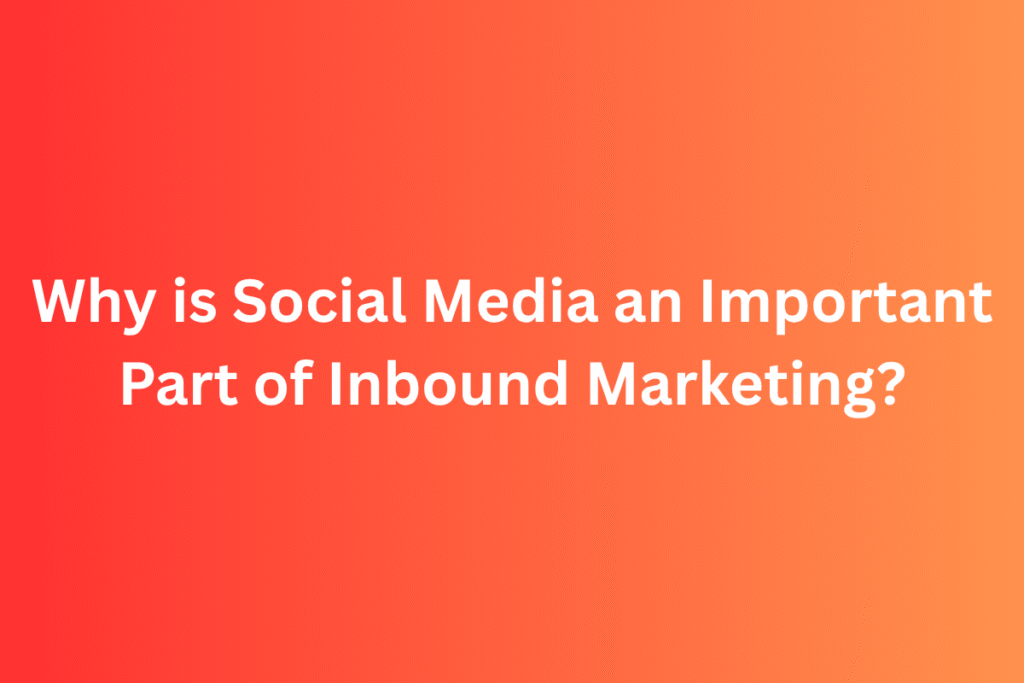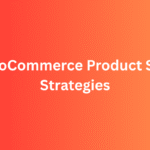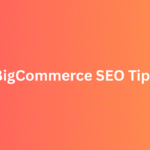When we talk about inbound marketing, most people immediately think of blog posts, SEO, and email campaigns. And that’s fair they’re all powerful tools. But there’s one channel that often gets overlooked or used the wrong way: social media.
Let’s be honest. Most businesses use social media just to post updates, promotions, or the occasional meme. But when used strategically, social media can be one of the most powerful drivers of your inbound marketing success.
In this article, we’ll explore how social media fits into the inbound framework, why it’s so important, and how you can actually use it to attract, engage, and delight your audience.
Let’s Quickly Recap: What is Inbound Marketing?
Inbound marketing is all about attracting potential customers to you instead of chasing them down with cold emails or intrusive ads.
It focuses on:
- Solving problems
- Building trust
- Creating helpful content
- Nurturing relationships
The inbound journey usually looks like this:
Attract → Engage → Convert → Delight
Social media fits into every stage of this journey if you know how to use it right.
So, Why is Social Media So Important in Inbound Marketing?
Let’s break it down point by point realistically, and from the point of view of a small business or solo marketer trying to build something meaningful.
1. It’s Where People Spend Their Time
Let’s be real your audience is already on social media.
Whether it’s Facebook, Instagram, LinkedIn, or TikTok, people spend hours every day scrolling, liking, sharing, and discovering.
If your content isn’t showing up where your audience is hanging out, you’re missing the chance to connect with them organically.
Inbound marketing is about showing up when people are looking for something or open to discovering something. Social media does both without feeling pushy.
2. It Helps You Build Trust (Before the Sale)
People buy from people they trust.
On social media, you’re not just promoting products you’re building a brand personality. You can:
- Share behind-the-scenes content
- Tell real stories
- Respond to comments
- Join conversations
- Admit mistakes
These small, human moments build emotional connections. And trust is the foundation of inbound marketing.
You’re not just shouting into the void you’re starting a two-way conversation.
3. It Amplifies Your Content
Let’s say you’ve written a brilliant blog post or created a helpful how-to guide. Great! But if no one sees it, what’s the point?
That’s where social media comes in.
You can:
- Share blog snippets on LinkedIn
- Create an Instagram carousel explaining key points
- Turn quotes into graphics for Twitter
- Post a quick explainer video on Facebook
It’s not about reposting the same thing everywhere. It’s about repurposing your content in ways that suit each platform and audience.
This helps drive traffic back to your site organically. And that’s what inbound is all about.
4. You Can Attract the Right People with the Right Hashtags and Content
Hashtags, trends, and search tools on platforms like Instagram, LinkedIn, and even TikTok allow you to reach new audiences who are actively searching for topics related to your niche.
You’re not interrupting someone’s day. You’re appearing in their search or feed because they’re already interested.
This is inbound 101 let people come to you because they find your content relevant and valuable.
And because you’re not using hard-sell tactics, the relationship starts on a much healthier note.
5. It’s Great for Listening and Research
Inbound isn’t just about broadcasting it’s also about listening.
Social media is a goldmine for insights:
- What are people talking about in your industry?
- What questions do they keep asking?
- What complaints come up again and again?
- Which posts get more engagement?
You can use this information to:
- Create blog posts that answer real questions
- Build products people actually want
- Improve your messaging
- Spot content gaps that your competitors are ignoring
This is how you build content that actually attracts people not just ticks an SEO box.
6. It Supports Relationship Building
One of the best things about social media is the ability to have direct conversations with your audience through comments, DMs, and replies.
You can:
- Help someone solve a small problem
- Thank them for sharing your post
- Recommend a resource
- Share their content
These interactions might seem small, but they create a sense of community. And that’s powerful.
Inbound isn’t about shouting at strangers. It’s about building relationships that turn into long-term customers.
Social media gives you the perfect space to do that casually, consistently, and authentically.
7. It Feeds Your Funnel Gently
Social media content plays a vital role in moving people through your marketing funnel.
Here’s how:
- Top of the funnel (TOFU): Awareness
- Educational posts, reels, and shareable tips
- Example: “5 signs your website isn’t converting visitors”
- Middle of the funnel (MOFU): Consideration
- Case studies, testimonials, value-driven posts
- Example: “How we helped a London-based florist grow organic traffic by 120%”
- Bottom of the funnel (BOFU): Decision
- Free trials, offers, product demos
- Example: “See how our SEO audit tool can help your business in just 7 days”
With the right content mix, you can gently guide someone from just discovering you to trusting you—and eventually buying from you.
And because it happens naturally, people feel in control. That’s the core of inbound.
8. It Makes Your Brand More Human
Inbound marketing is based on being helpful, not salesy.
Social media is one of the few places where your business can show its personality without sounding like a robot.
You can be:
- Funny
- Honest
- Empathetic
- Passionate
- Even a little vulnerable
This makes you memorable. People want to follow brands they can relate to—not just companies that want to sell them something.
In other words, social media helps you stop being “just a business” and start being a brand people care about.
9. You Can Test Ideas Quickly
Let’s say you’re thinking about writing a full blog post or launching a new product.
Why not test the idea on social media first?
- Post a short version of the tip
- Run a poll to ask what people think
- Share a teaser graphic
- Ask a direct question
Social platforms give you instant feedback. If people engage, you know you’re on to something. If not, you’ve saved yourself time and effort.
This kind of agile, fast feedback loop is hugely valuable in inbound because it keeps you aligned with what your audience actually wants.
10. It Boosts SEO and Brand Visibility
This one often gets overlooked.
When your social media content drives traffic to your website, increases dwell time, and earns shares or backlinks, it helps your overall SEO performance too.
Google might not directly rank your social profiles, but they do see signals when people:
- Search your brand name after seeing you on social
- Visit and interact with your content
- Link to your blog from their own site
All of these improve your domain authority and help your inbound engine run stronger.
Realistic Social Media Goals for Inbound Marketers
You don’t need to go viral. You don’t need to post five times a day. You just need to be useful, relevant, and consistent.
Here’s what a healthy inbound-focused social strategy might include:
- 2–3 helpful posts per week
- Engaging in comments and DMs
- Sharing user-generated content
- Answering questions publicly
- Linking back to blog content or lead magnets
- Posting short-form videos (even phone-shot reels work!)
Focus on quality over quantity. Social media should support your inbound funnel not become your full-time job.
Social Media is the Friendly Door to Your Inbound Funnel
Let’s wrap this up with a simple truth:
Social media is the friendly face of your inbound marketing.
It’s where people first discover you. It’s where they engage without pressure. It’s where they decide if they trust you enough to go further read a blog, sign up to your newsletter, or even buy.
If you’re not using social media as part of your inbound strategy, you’re missing one of the most human and effective tools available.
It doesn’t need to be perfect. It just needs to be real.
Start small, stay consistent, and focus on being useful. That’s the key to building trust and turning strangers into loyal customers.
Discover more from PratsDigital
Subscribe to get the latest posts sent to your email.



Pingback: How Can Audience Segmentation Enhance Your Inbound Marketing Efforts? - PratsDigital
Pingback: What Is an Inbound Marketing Agency? - PratsDigital
Pingback: Learn How to Measure Inbound Marketing Effectively - PratsDigital